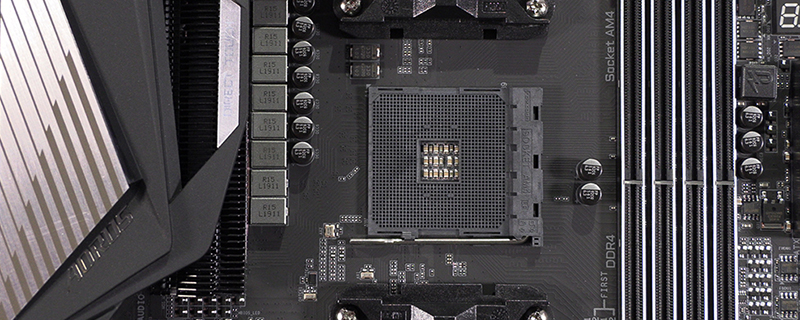Gigabyte X570 Aorus Master Review
Conclusion
Please note this review was written prior to the AGESA F7b BIOS update. Our graphs have been updated to reflect the new results, but the text remains the same as the fast single threaded stock performance affects so few of our results and none of our overall opinion.
It’s impossible to begin a review of a Gigabyte motherboard without addressing the elephant in the room, so let’s get it out of the way right at the start. Yes, the efforts their R&D team have put into making the power phases deliver huge globules of smooth, consistent power has been time and money well spent. After a little bit of a rough patch in their motherboard manufacturing the X570 Aorus Master is very much Gigabyte back with a bang. If you’ll excuse the terminology.
In some regards we were uncertain as to whether to give them lots of credit for doing something that they should have been doing all the time, or that other manufacturers manage, but we think that anyone who notices their flaws and not only fixes them but goes above and beyond until that weakness is now an area of strength should be rewarded for their self-awareness and willingness to do a quick course correction whilst in view of the watching public. Although a slightly tenuous comparison it’s like when a celebrity enters rehab. Sure you could ignore them and laud those who have never struggled with personal demons, but many people blindly carry on down a path to destruction pretending that everything is fine. So kudos to Gigabyte for accepting there was a problem and addressing it comprehensively.
Aesthetically the Gigabyte X570 Aorus Master is yet another in the hugely successful Aorus range. If you’re the type of person who loves lots of sizzle with your steak, lots of flash and flair, then the Aorus range is unquestionably one that you should take a closer look at. There are RGB lights all over the shop and all working smoothly with richly saturated, bright, colours. There are plenty of RGB LED headers and even the audio plate can be tuned to a colour of your choosing. Couple this to some nicely designed heatsinks on both the power phases and the X570 chipset itself and the smooth lines of the M.2 heat spreaders and you have a motherboard which is very attractive without being so black as to disappear into the darkness inside your chassis.
Performance is why we are all here though, and the Gigabyte X570 Aorus Master has much to offer here also. Our final overclock ended up being 50 MHz shy of that which we obtained on either the Crosshair VIII Hero or the Strix-E, but that didn’t particularly negatively affect the results. Looking through our graphs there is a nice spread of areas where the Aorus Master does well, topping out the render-heavy Blender graph just like it does the gaming graphs. One area where the Aorus Master really shines was in the single threaded benchmarks of Cinebench, with the stock setup topping the Cinebench R15 single-thread graph, whilst both stock and overclocked setups sat at the top of the newer Cinebench R20. There are some results in which the Master was more in the middle of the pack but, as previously mentioned, the results across all the X570 motherboards we’ve tested so far are a reflection of the solidity of the AMD X570 chipset as a platform, with barely a hairs breadth between any of them.
With great looks, solid performance, a broad feature set and a price tag that places it firmly in the middle of the Gigabyte X570 triumvirate the Gigabyte X570 Aorus Master is a welcome return to form for the Taiwanese company.
Discuss the Gigabyte X570 Aorus Master on the OC3D Forums.
VIDEO




